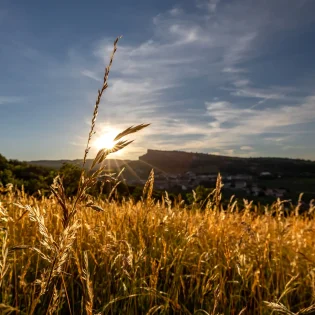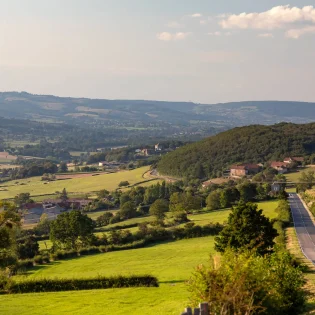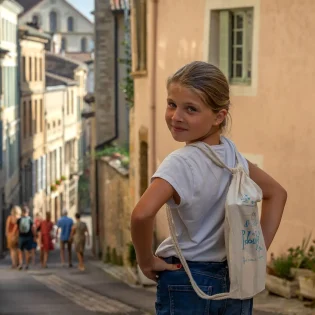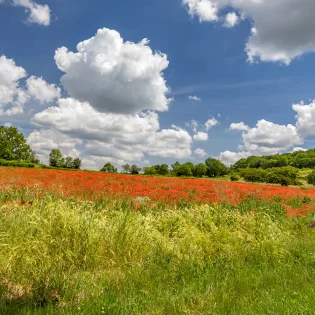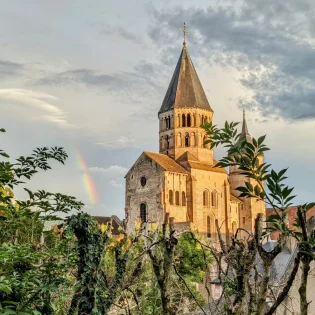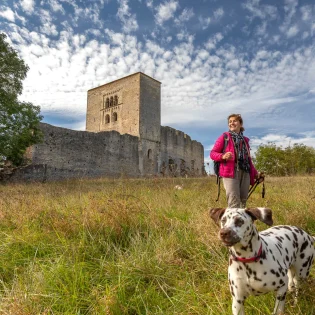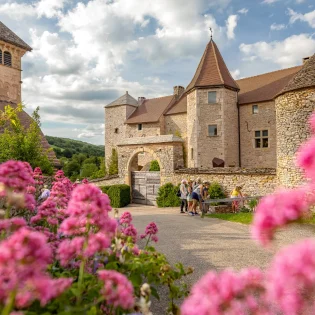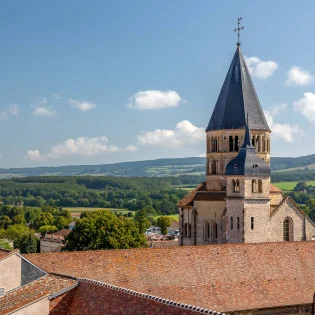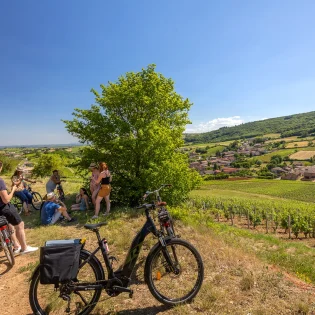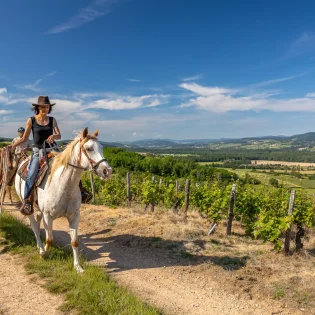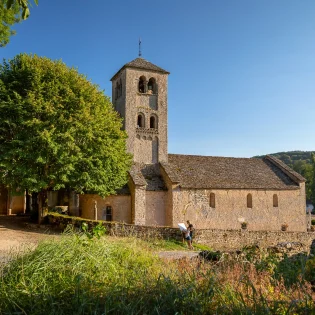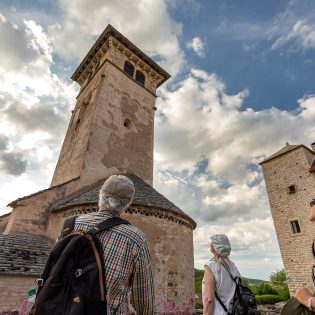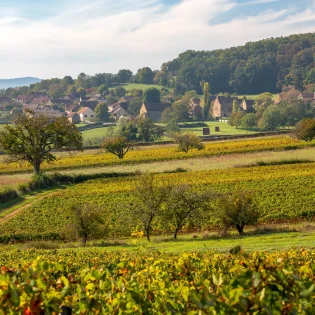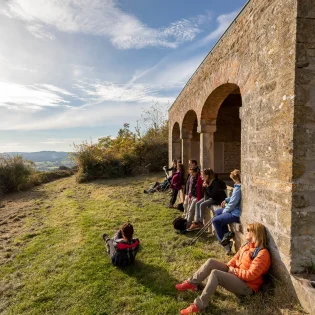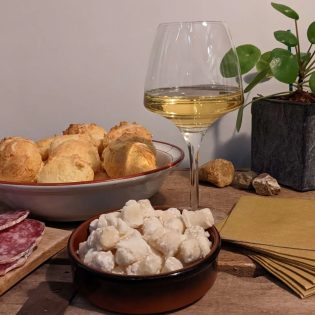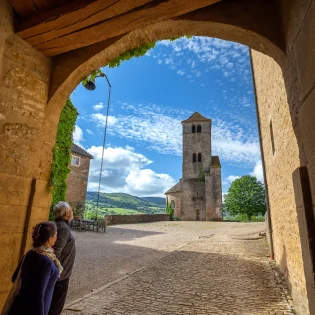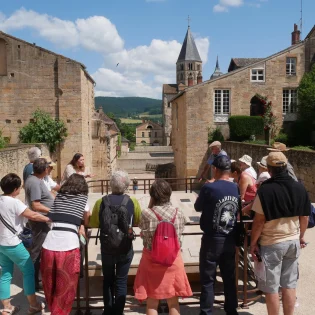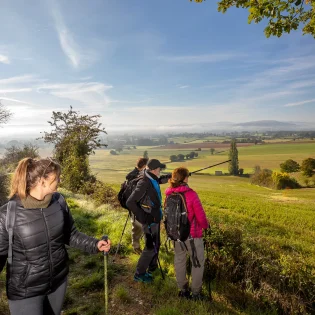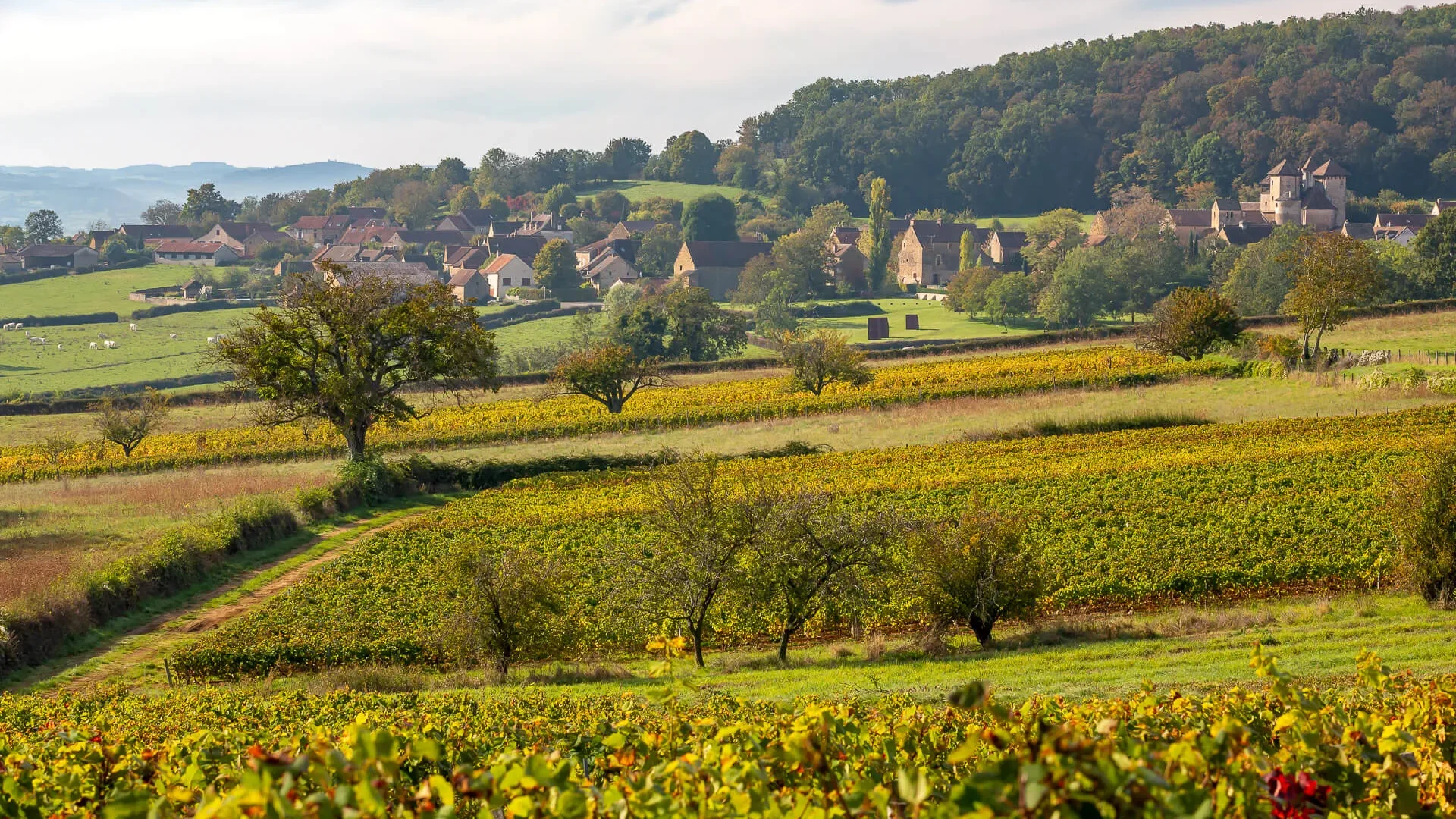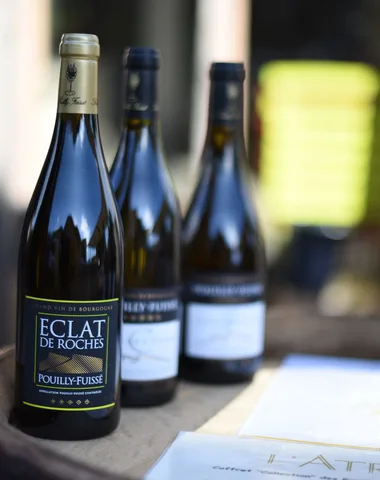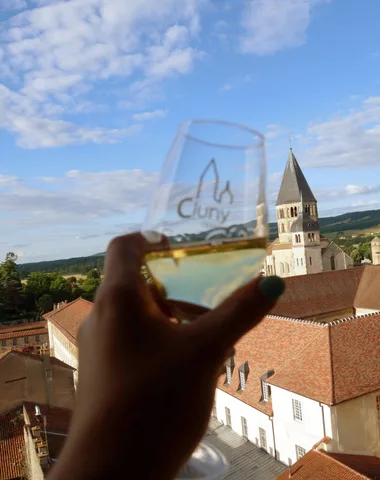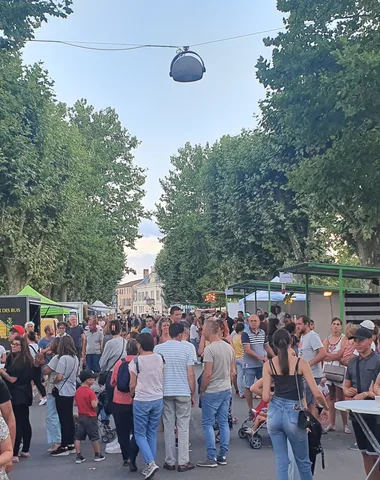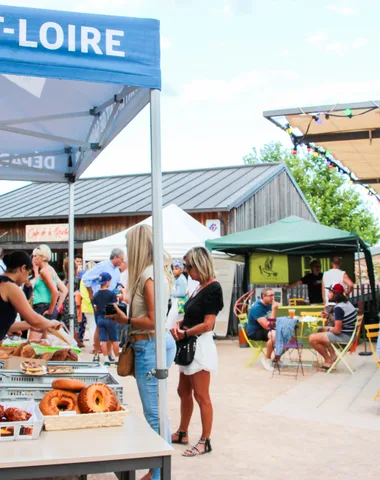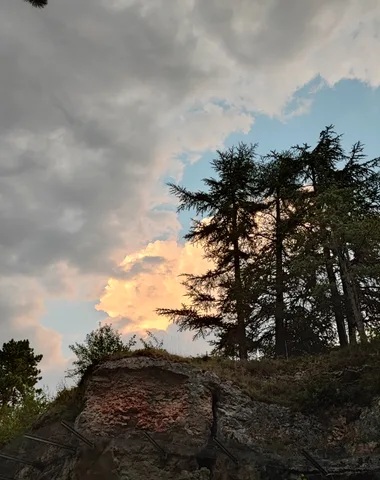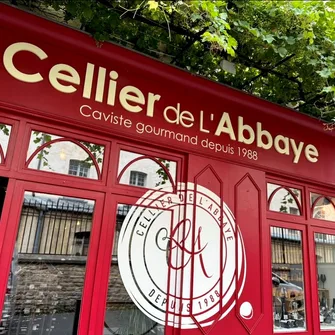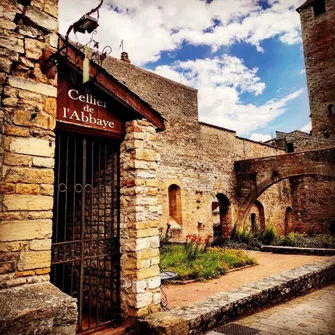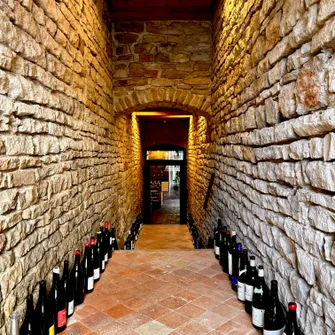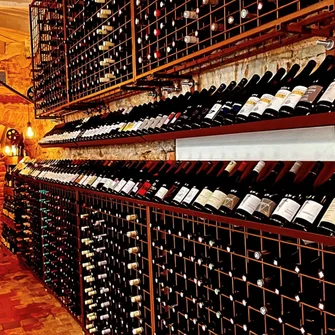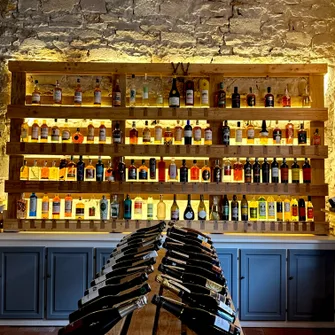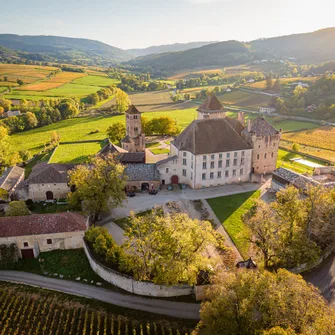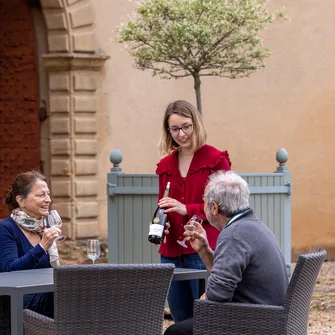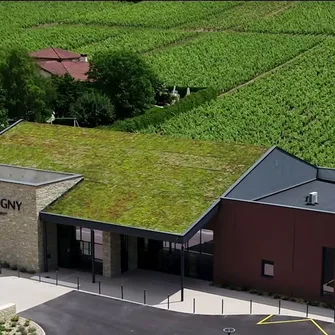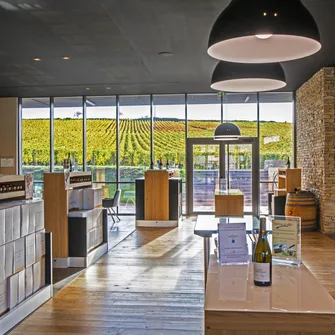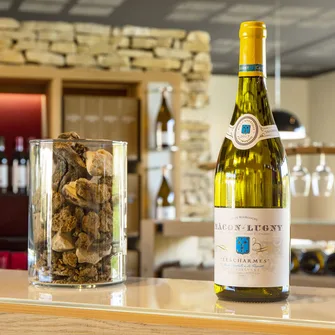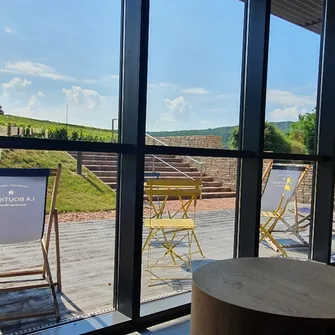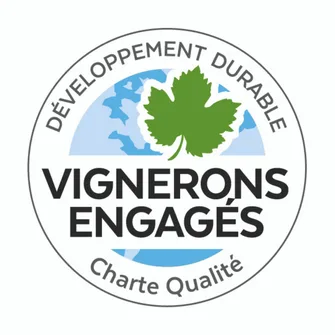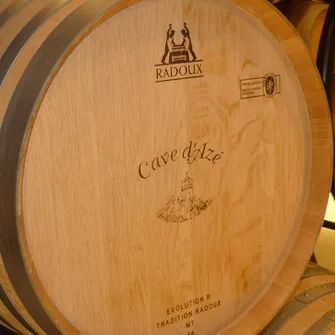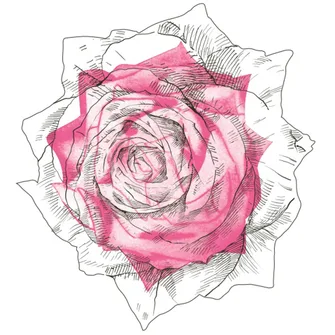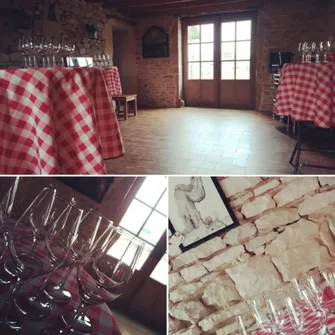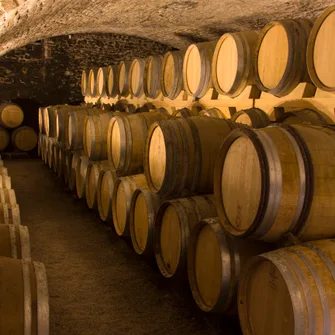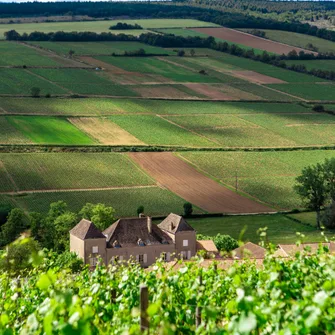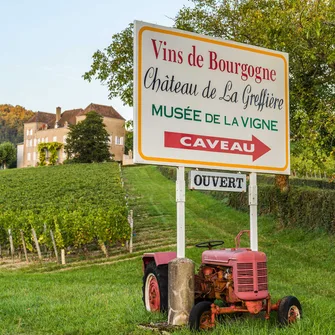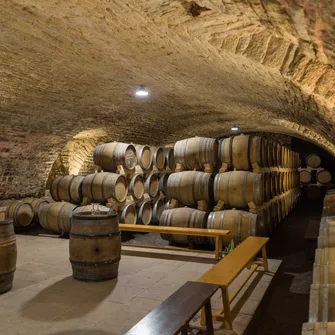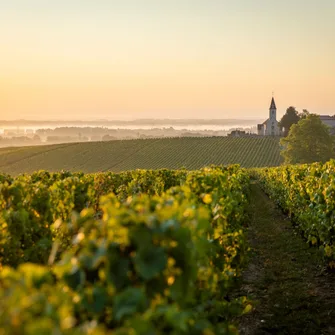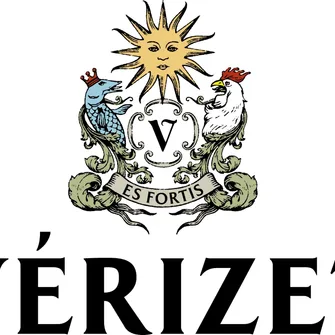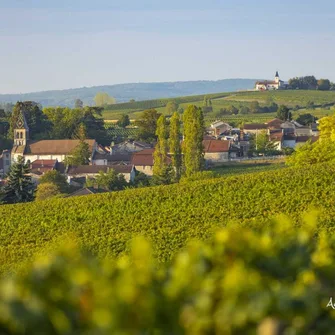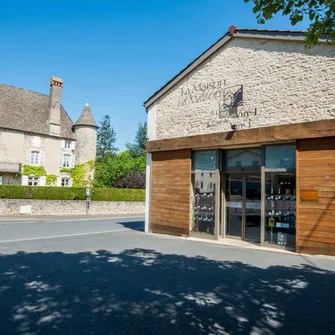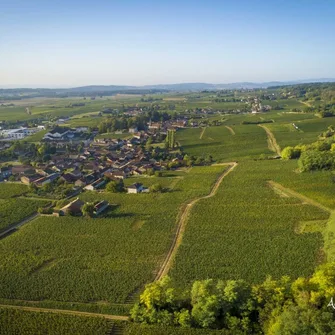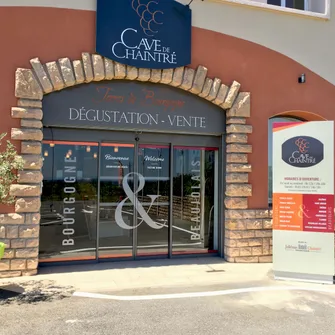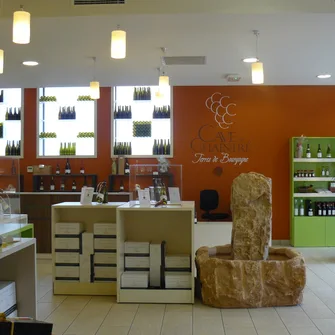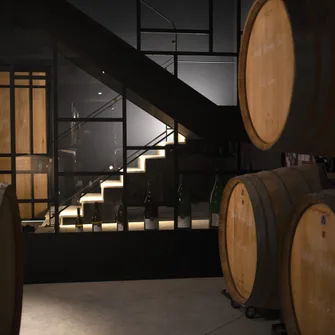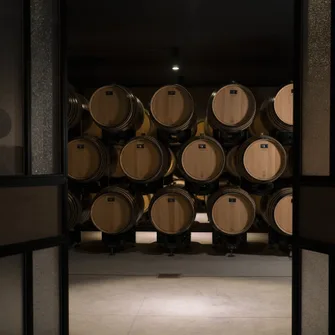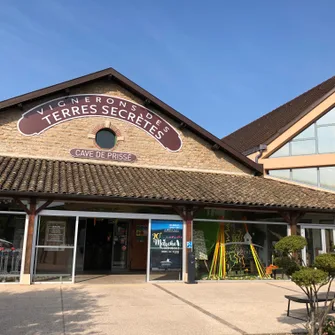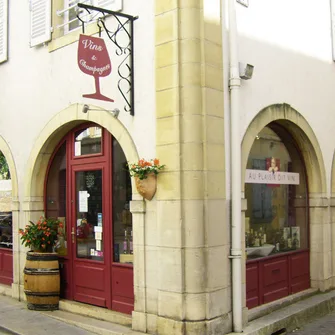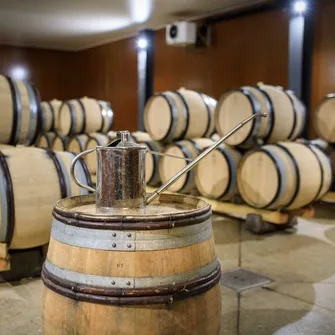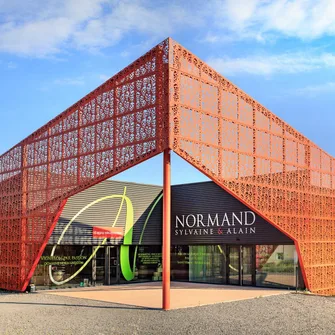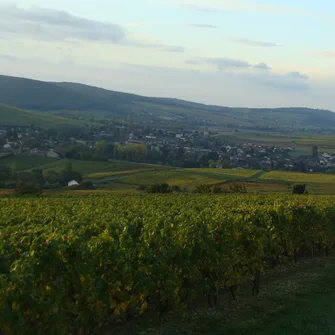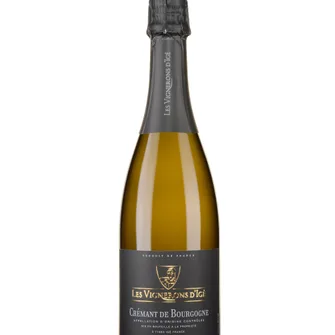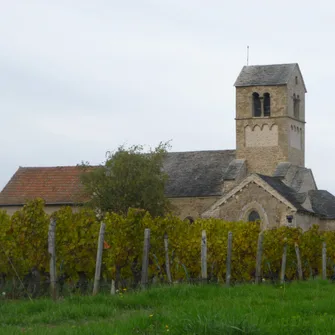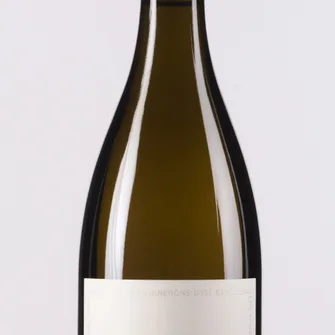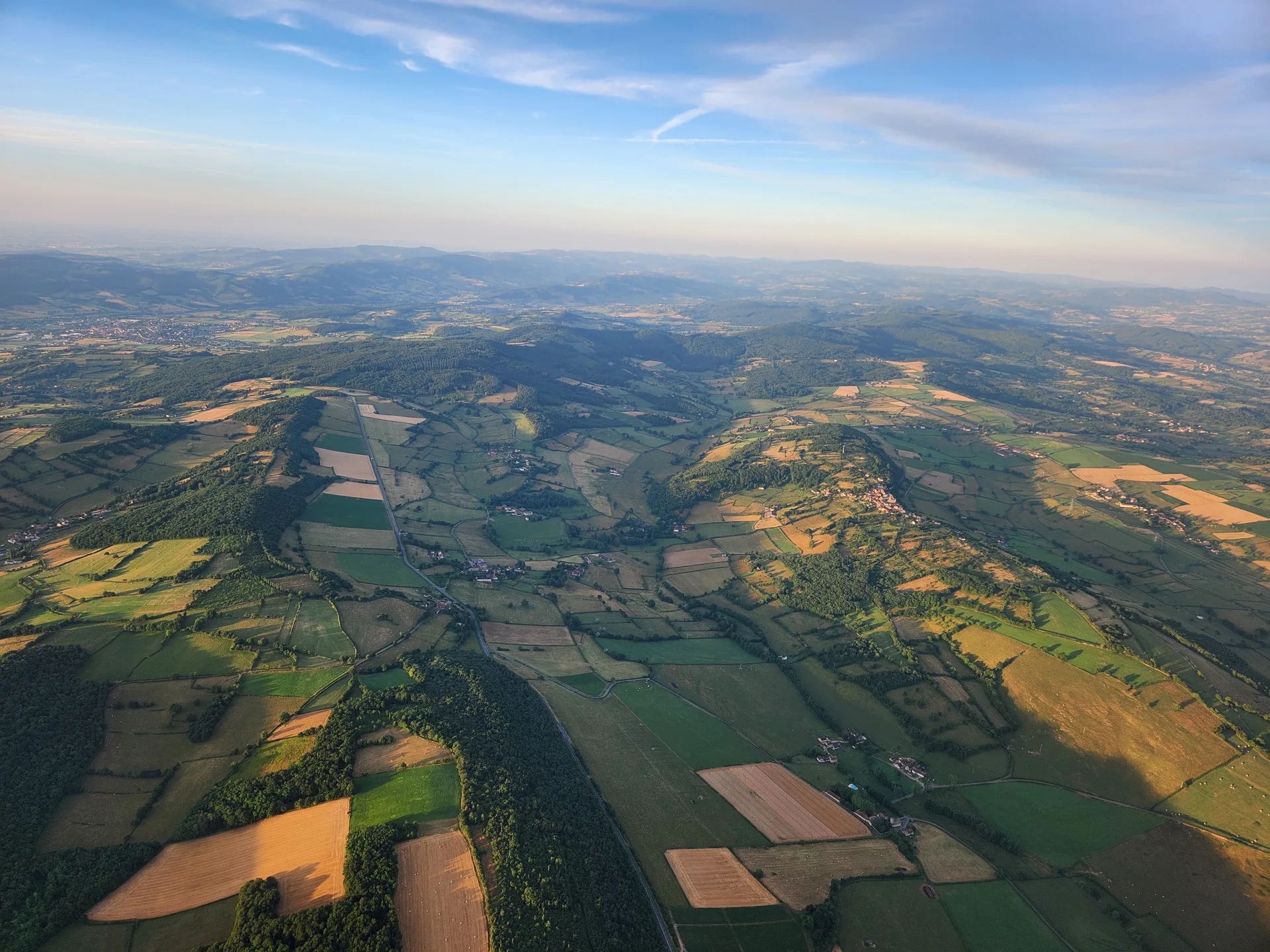Un vignoble, un terroir et des hommes
Le cépage chardonnay, dont on dit qu’il trouve son origine dans le village éponyme niché près de Tournus, règne en maître quasi absolu dans ce territoire viticole du Mâconnais, dernier vignoble du sud de la Bourgogne. Ici, point de côte uniforme, mais une succession de vallons parallèles à la Saône où le chardonnay exprime un incroyable nuancier d’arômes et de saveurs que l’appellation contrôlée ordonne et classe dans une savante hiérarchie : Mâcon Villages, Saint-Véran, Viré-Clessé, Pouilly-Loché, Pouilly-Vinzelles et Pouilly-Fuissé se partagent une production répartie sur plus de 5000ha de vignoble.
Maître Chardonnay sait aussi sagement céder quelques parcelles de ce terroir à d’autres cépages à vins rouges tels que le gamay donnant des vins fruités et savoureux ou le pinot noir pour des vins fins et élégants.
Ainsi Bourgogne rouge, Beaujolais ou Mâcon viennent compléter en rouge une gamme déjà riche de vins blancs, à laquelle s’ajoute en apothéose le pétillant et fringuant Crémant de Bourgogne.
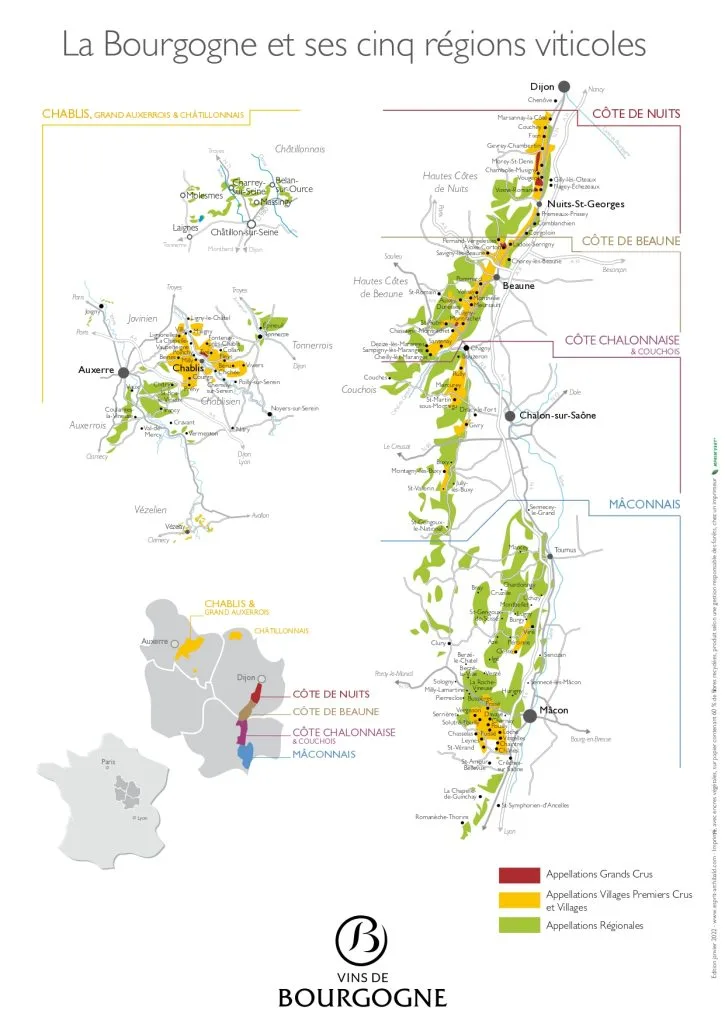
Les climats de Bourgogne
En Bourgogne, quand on parle de Climats, on ne lève pas les yeux au ciel mais on les baisse sur la terre
Bernard PIVOT
En Bourgogne, un Climat désigne une parcelle de vignes, progressivement et précisément délimitée par l’homme, et qui est reconnue par son nom depuis des siècles, souvent depuis le Moyen-Âge. Chaque Climat possède des caractéristiques géologiques, hydrométriques et d’exposition particulières. La production de chaque Climat est vinifiée séparément, à partir d’un seul cépage, et le vin ainsi produit prend le nom du Climat dont il est issu. La personnalité du Climat s’exprime dans le vin, millésime après millésime, grâce au savoir-faire du vigneron. Nulle part ailleurs dans le monde, l’homme n’a cherché à lier d’une manière aussi précise et intime, une production viticole à son lieu de production.
Les Climats du vignoble de Bourgogne sont inscrits depuis 2015 au patrimoine mondial de l’UNESCO dans le but d’encourager sa protection et sa préservation !
En rayonnant spirituellement sur toute l’Europe médiévale, l’abbaye de Cluny diffuse non seulement ses idées mais aussi ses connaissances. La culture de la vigne, que les moines ont perfectionné au fil des siècles, fait partie de ces traditions qui ont imprégné l’ensemble du monde clunisien et qui ont forgé son identité.
Le salon des vins clunisiens
Le Salon des vins clunisiens, qui s’inscrit dans la démarche de classement à l’Unesco du réseau, célèbre cet héritage en rassemblant des producteurs d’horizons et de terroirs différents.
Date à retenir : 18 octobre 2025.
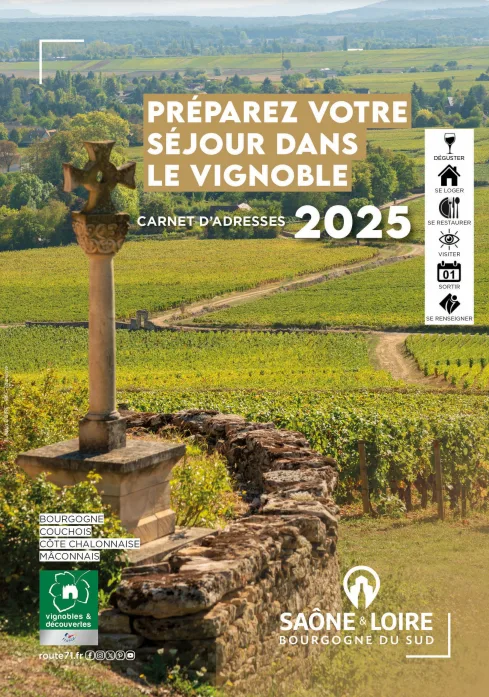
Préparez votre séjour dans le vignoble.
Retrouvez dans ce carnet toutes les bonnes adresses pour préparer votre voyage dans le Couchois, la Côte Chalonnaise et le Mâconnais. Edition mise à jour quotidiennement.
Carte des vignobles de Saône et Loire
Cette carte valorise les vignobles du Couchois, de la Côte chalonnaise, des Maranges, du Mâconnais et du Beaujolais, avec les 4 circuits VTT-Gravel Véloeno71, les sentiers pédagogiques, le label Vignobles & Découvertes.
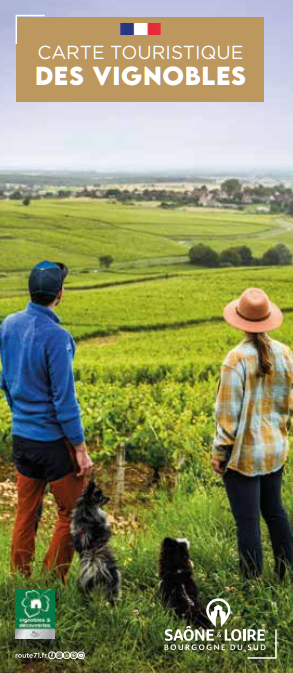
La route des vins Mâconnais-Beaujolais
De Tournus à Mâcon en passant par Cluny, la route des vins est indissociable du circuit de l’art roman. Rares sont les villages des vingt-six appellations de Mâcon-Villages et des cinq splendides appellations communales où il n’y a pas un petit édifice roman à découvrir.
La viticulture constitue une attraction en Sud Bourgogne. Impossible de passer par là sans profiter d’une dégustation des vins de Bourgogne !
En centre-ville de Cluny, trois cavistes vous proposent un large choix de vins de Bourgogne avec conseils et coup de cœurs ! Pour les viticulteurs indépendants, il faudra vous éloigner un peu de Cluny pour partir à la rencontre des producteurs…
Parcourez les vignobles du Sud Bourgogne
Les offres de nos partenaires
Les évènements viticoles
Visite découverte de la Cité des Climats et des Vins de Bourgogne à Mâcon
- MACON
Quand le Sud vient à la rencontre de la Bourgogne
- LA ROCHE-VINEUSE
Apéritif panoramique à Tournus, Rive Gauche
- SAINT-GENGOUX-DE-SCISSE
Sortie nature et terroir : dégustation au cœur de la biodiversité
- BUSSIERES
L’ApérHaut ! – Visitez Cluny “Hautrement”
- CLUNY
NaturGourmandes : Berzé-la-Ville
- BERZE-LA-VILLE
NaturGourmande: Les Carrières de la Lie
- LA ROCHE-VINEUSE
Retrouvez nos domaines viticoles, caves partenaires et commerces de vin :
Partagez votre recherche
Ce contenu vous a été utile ?
Merci !
Merci d’avoir pris le temps de nous indiquer que ce contenu vous a été utile. Vos encouragements nous sont essentiels et vos retours nous permettent de nous améliorer.
Votre avis nous intéresse. Participer à notre suivi qualité !
Merci
Merci d’avoir pris le temps de nous indiquer que ce contenu ne vous a pas été utile. Nous en sommes désolés.
Partager ce contenu
Partager ce contenu

